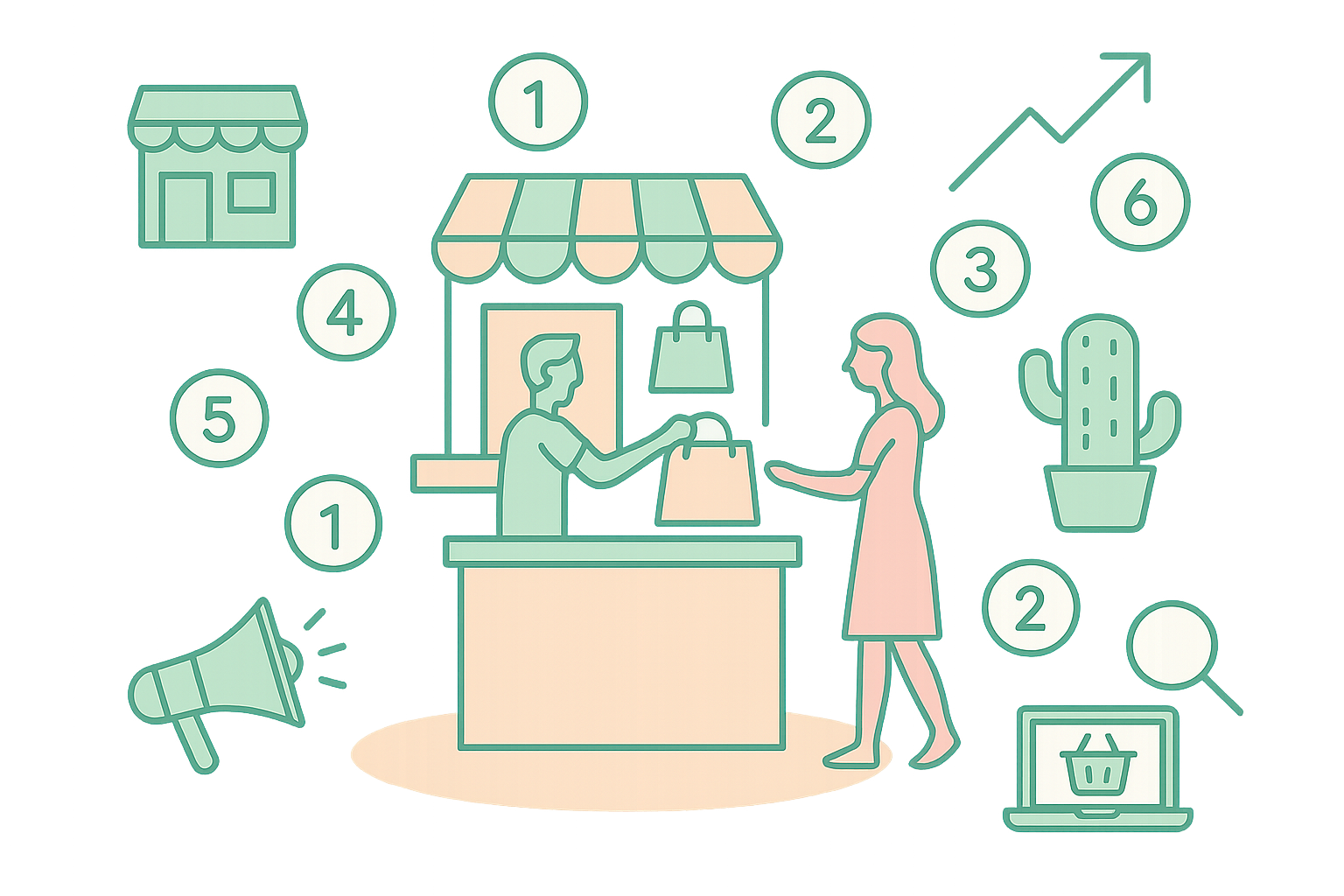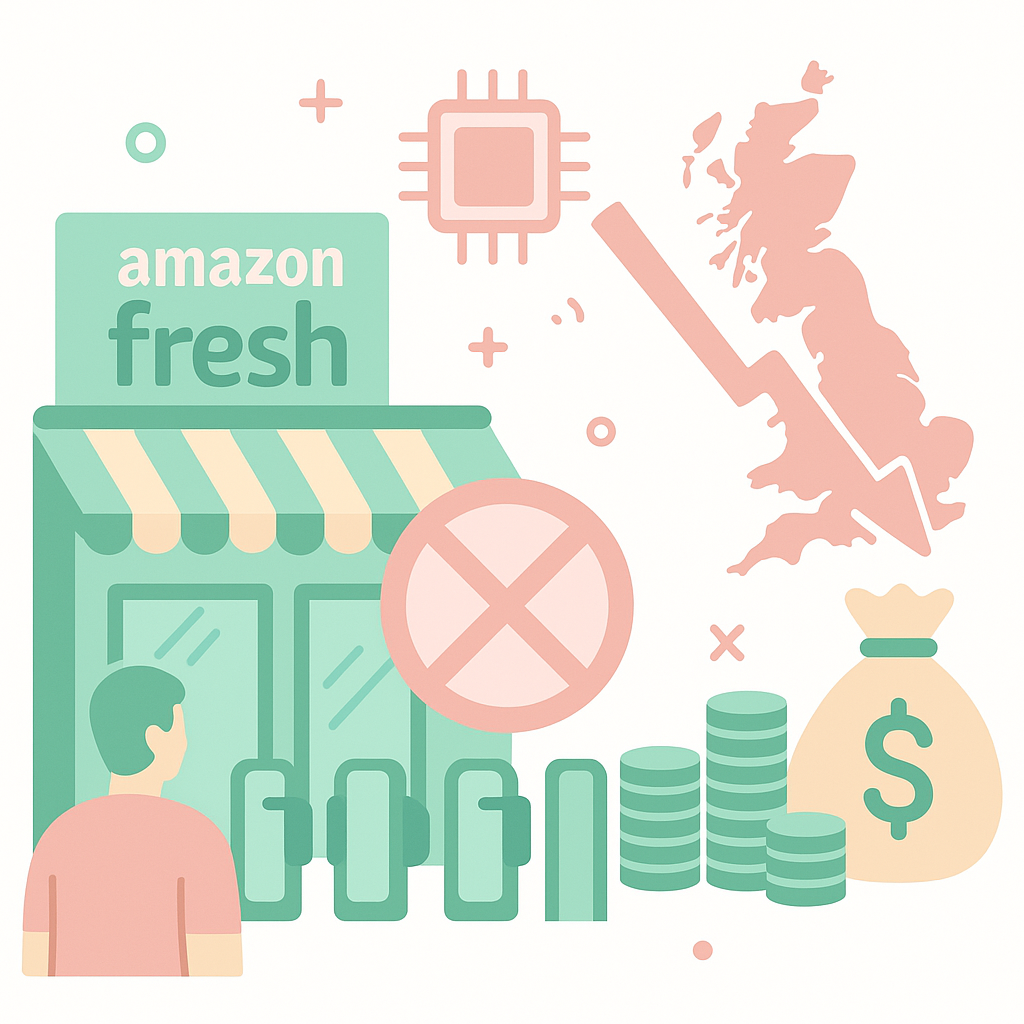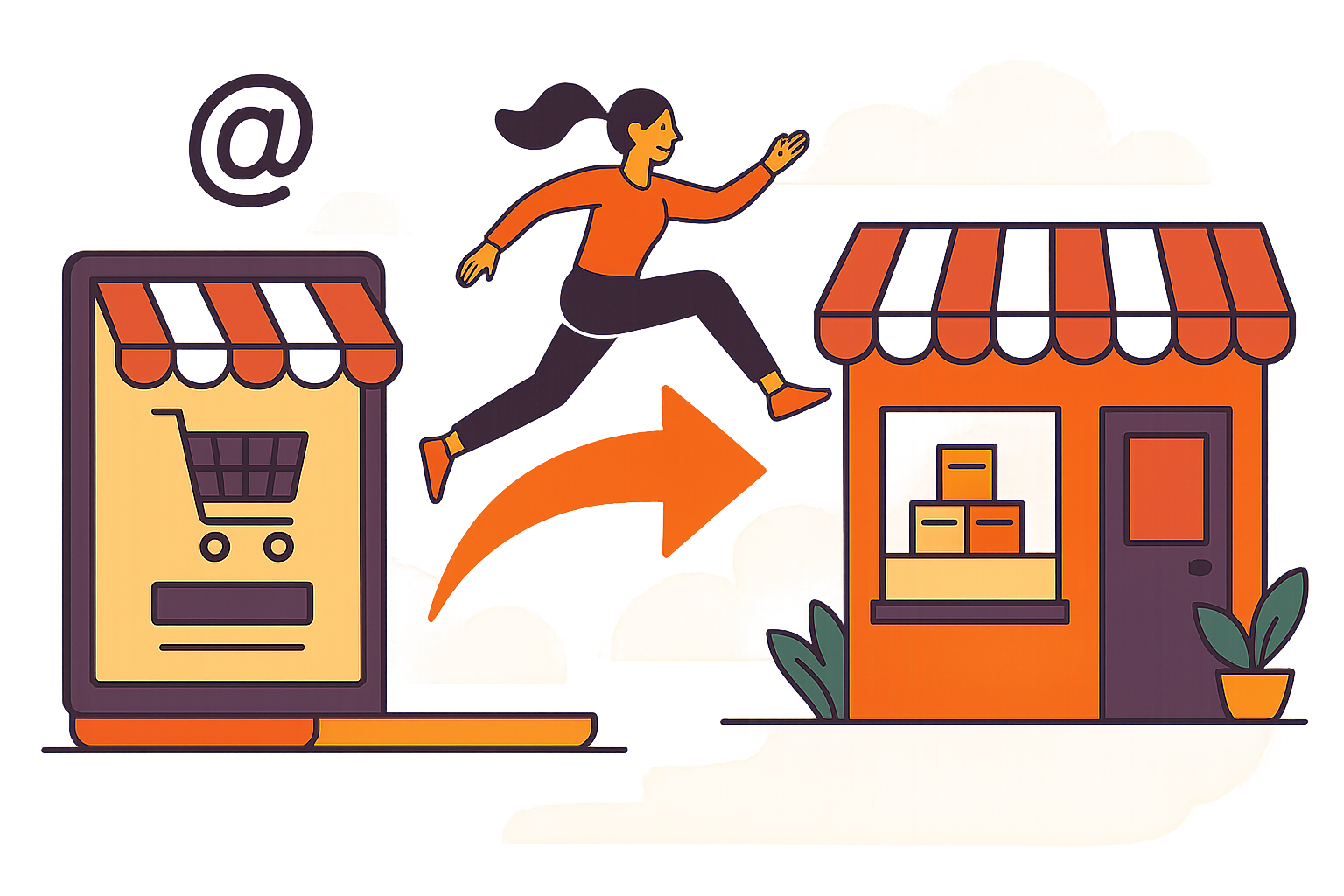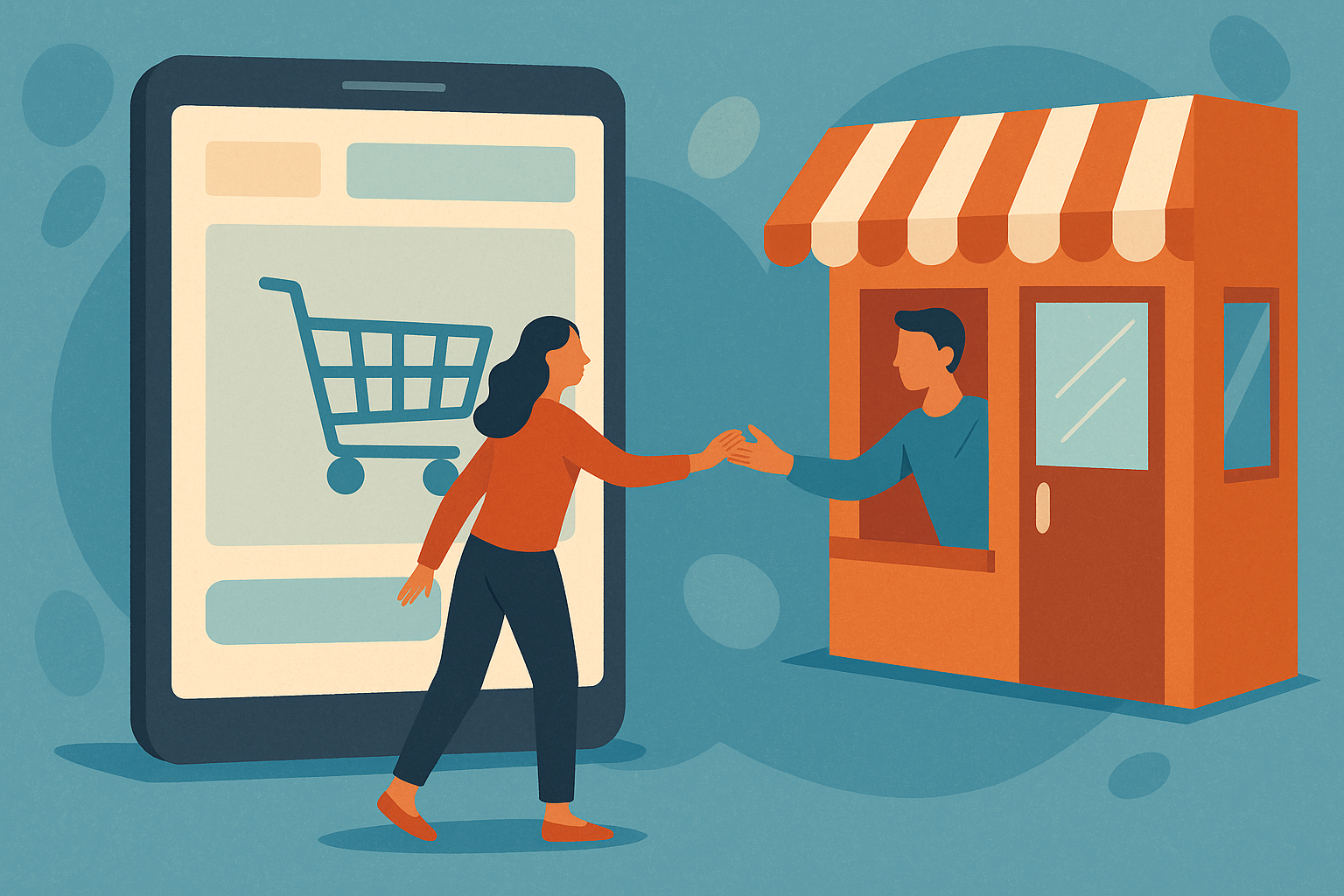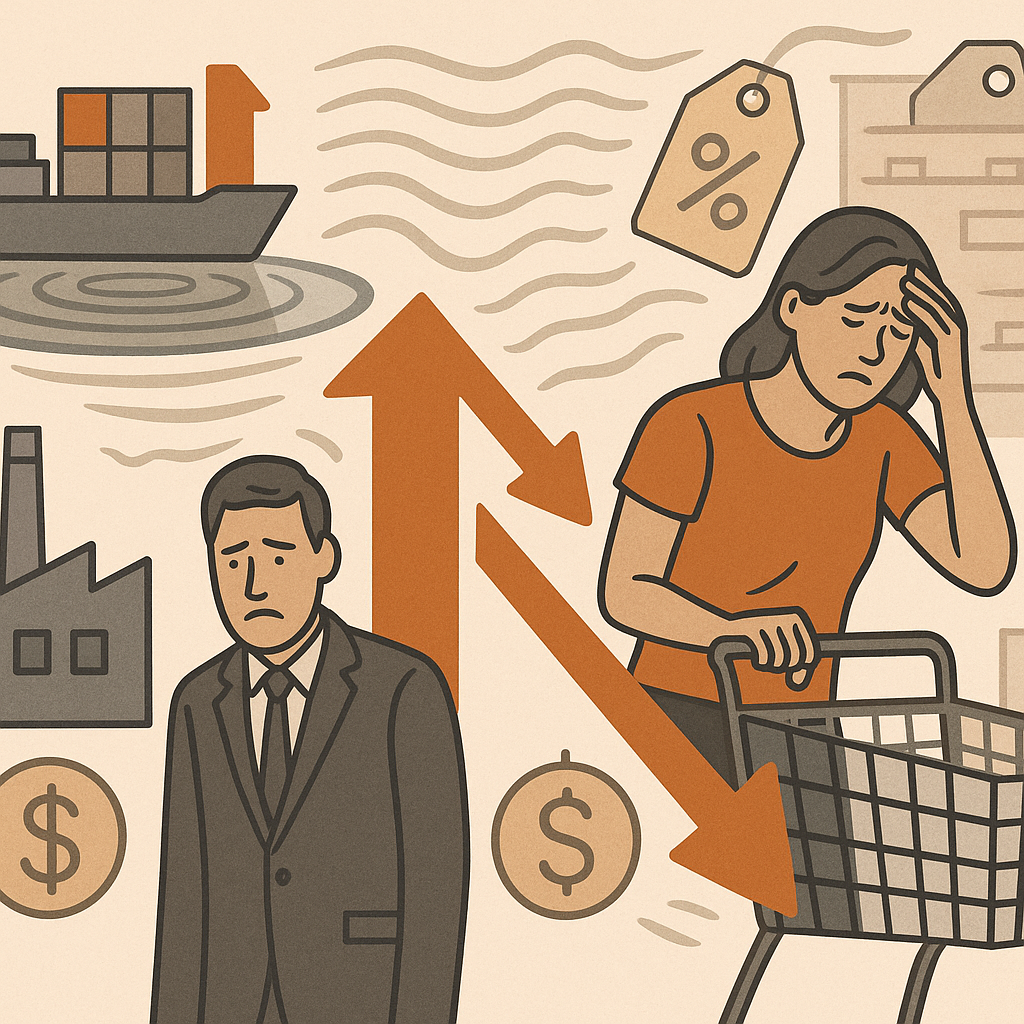Blog
Make Pop-Ups Pay: Pendoo Scan-and-Go
Nov. 5, 2025

When checkout steals the momentum
Pop-up activations are short by design: a weekend, a festival day, a week-long residency. You plan the display, curate the product mix and spend to bring people through the door. Here's the thing — if checkout becomes a choke point, you lose more than transactions. Long queues in cramped spaces kill impulse purchases and mute social excitement. An Instagram photo looks a lot less tempting when the comment thread includes "had to wait 15 minutes to pay."
Most shop owners we've talked to describe the same pattern: a great turnout at peak, one or two tills, and customers drifting away because paying takes too long. When your activation window is small, every abandoned sale has an outsized impact on ROI. Key point: converting attention into a sale depends as much on checkout flow as on the product on the shelf.
Why speed matters more in temporary retail
Limited space and temporary staff are the double-edged sword of pop-ups. You want a minimal, eye-catching footprint, but that usually means fewer physical tills and less experienced cashiers. Because pop-ups run on momentum, small inefficiencies compound quickly. Retail pilots and industry reports consistently show meaningful uplifts when checkout friction is removed — many scan-and-go rollouts report checkout time reductions in the range of 50–65% and average basket increases of roughly 15–25%. Those numbers aren't theoretical: they change whether a short activation loses money or turns a neat profit.
A lighter, faster checkout that fits pop-ups
Pendoo solves the bottleneck with a web-native scan-and-go flow. There's no app to download — customers scan a QR code, use their phone camera to scan product barcodes, and pay in the browser. The experience is intentionally simple so it fits temporary spaces and impatient shoppers.
Key Point: because every shopper becomes a checkout lane, you dramatically increase throughput during peak windows without adding staff or hardware. Your team spends more time creating memorable moments and less time processing card payments.
Parallelized checkout + lightweight setup = more transactions, happier customers, cleaner operations.
Concrete advantages for shop owners
You get measurable improvements across revenue, efficiency and customer satisfaction. Faster checkout increases conversion at peak times; higher throughput boosts same-day revenue. Labor gets used where it matters most — hospitality, upsell conversations and managing exceptions. The digital-first checkout also feeds your marketing stack with product-level sales and customer contacts in real time, which is gold when you want to turn a one-off visit into repeat business.
| Metric | Typical Impact |
|---|---|
| Checkout time | Reduced by ~50–65% |
| Average basket size | Increase of ~15–25% |
| Staffing model | One monitor vs multiple cashiers |
A practical next step
Start small: run a one-day pilot at your next activation, measure checkout time and average basket, then iterate on signage and staffing. Setup is minimal — a few QR codes, shelf tags, reliable mobile connectivity and a host trained to manage exceptions. You'll likely see improvements within hours, and the data you capture will tell you where to scale.
If checkout friction has been the weak link in your pop-up strategy, a web-native scan-and-go solution like Pendoo turns that liability into a competitive advantage: faster transactions, bigger baskets, lower staffing overhead and better post-event marketing. Ready to make your next pop-up pay?
More retail technology bits
